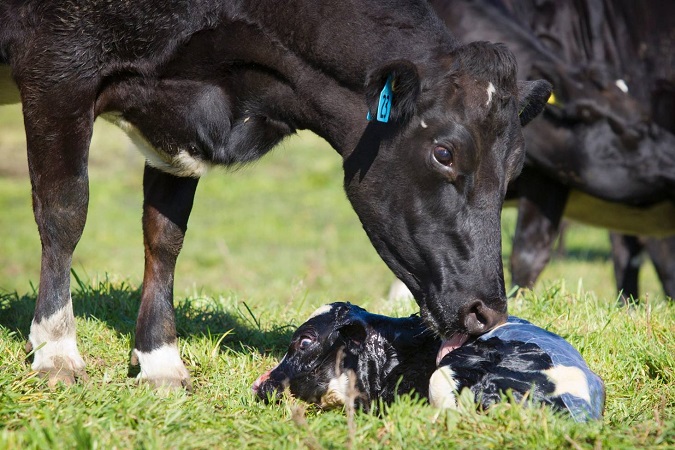

The majority of cows accept their calves at birth without problems but on occasion cows have been known to reject their own calves. When a cow rejects her calf it is essential to try to get her to accept the calf as quickly as possible because the calf needs the nutrients and care that is naturally provided by his mother.
Cows may reject their calves for a variety of reasons. It is possible that your cow simply does not know what she is supposed to do with the calf if she has never given birth. Other reasons for rejection may include a failure to recognize the calf or a medical problem with the calf. It is important to know the difference between a confused or uncertain cow and one who is aggressive toward the calf. You do not want the cow to injure the calf. If your cow is behaving aggressively toward the calf, your best option may be to bottle feed the calf. If a cow rejects her calf, consult your veterinarian.
– Licking the Calf
Cows should naturally lick their calves clean after birthing. If your cow is not making a move to perform the motherly duties of cleaning and nursing the calf, she may need a little encouragement. One old farmer’s trick for getting a cow to accept her calf is to pour grain over the calf’s back when he is first born, encouraging the cow to lick the calf clean in the process of eating the grain. If you do not want to use grain, there are also products marketed for the same purpose. These products can be poured over the calf to encourage the mother to clean and accept the calf. If your cow is simply confused or a little bit uncertain as to what to do with the calf, cleaning should help her maternal instincts kick in and help her accept the calf.
– Forced Nursing
If your cow does not want to let the calf nurse, you can force her to do so by pinning her in a stock or a stall. When the cow is immobilized you can lead the calf to her and allow the calf to nurse. Make sure to hobble the cow’s hind legs with a set of hobbles or a rope so that she will be unable to kick. This is to restrict motion and go around the cow’s legs to prevent her from walking away or kicking. Many cows will accept calves after they have been forced to allow the calf to nurse for several days.
– Prior preparation
One of the most effective ways to minimize your chances of having a calf rejected is to plan ahead for your cow’s calving. Make sure to handle your cow regularly so if you have problems with the cow accepting her calf, you will be able to handle her and help her figure out what to do. Prepare a private birthing location for your cow. Cows are more likely to successfully bond with their calves if they can birth in private or limit animals present and have plenty of room to interact with the calf. Young heifers may be intimidated by older cows and react by rejecting their calves or allowing another cow to take over the newborn. When the calf is born ,you should allow the cow to see the calf. If possible, smear some of the birthing fluids across the cows mouth and nose area to stimulate her maternal instincts.
 Contact Jaguza Support
Contact Jaguza Support